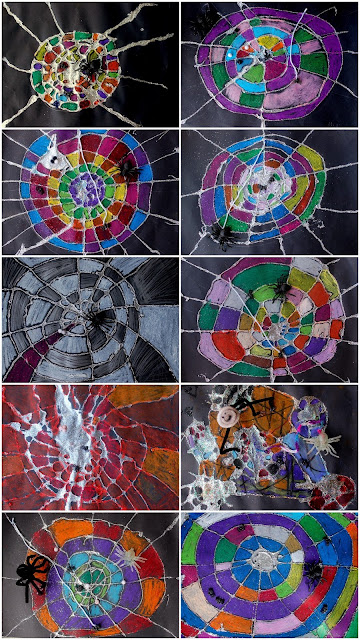It seems to be Birthday season here so I thought a cake lesson was in order. You can't do a cake lesson without looking at Wayne Thiebaud, an artist who was made famous by his paintings of cakes, pies and ice creams. Wayne's first exhibition of these paintings was in the 70's just before the Pop Art movement. He uses very thick paints to capture the texture of icing - people say his paintings look real enough to eat!
This was a great opportunity to get the children to experiment with modelling paste (or impasso, I used modelling paste as its thicker) and palate knives. I wanted them to feel as if they were icing a cake as they applied the paint to their boards.
What you need:
- Boards (I used MDF boards which I painted with black gesso - I get these cut for me at Bunnings and it works out really economical compared to using canvas). You may find paper gets ripped if you are using very thick paints and palate knives.
- Palate Knives
- Acrylic Paint*
- Modelling Paste or Impasso*
- Paint brushes
- Small glass beads for sprinkles (optional)
- Coloured rice for sprinkles (optional)
How To:
- Talk about Wayne's work and show examples
- Demonstrate how to draw a cake (I showed a tiered cake and a sliced cake - I also provided some handouts)
- Get them to have a practice first then draw their cake on the board with pencil
- Paint (with palate knives or brushes)
- Add sprinkles
Close up of that lovely texture:
Some cakes good enough to eat:
Note: not all children enjoyed using the palate knives, actually some found it a little frustrating - I had paintbrushes out as well so they could use them if they preferred.
Clay Donuts
At the end of the lesson we also had time to make some donuts out of air dry clay.
I tested a new homemade recipe using baking soda and corn flour (check out the directions here). Once the children had made a donuts shape they painted it with brown liquid watercolour and acrylic paints left over from the cakes. Finally they added rice or beads for sprinkles.
YUM!
Cheers
Fiona





.JPG%2Bfor%2Bblog.jpg)
.JPG%2Bfor%2Bblog.jpg)




.JPG%2Bfor%2Bblog.jpg)
.JPG%2Bfor%2Bblog.jpg)
.JPG%2Bfor%2Bblog.jpg)
.JPG%2Bfor%2Bblog.jpg)

.JPG%2Bfor%2Bblog.jpg)
.JPG%2Bfor%2Bblog.jpg)


.JPG%2Bfor%2Bblog.jpg)
.JPG%2Bfor%2Bblog.jpg)



.JPG%2Bfor%2Bblog.jpg)



.JPG%2Bfor%2Bblog.jpg)

















